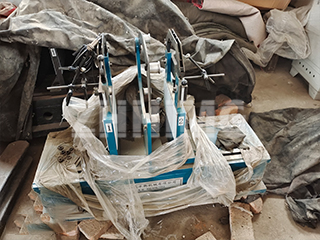Granite mechanical components are widely valued for their stability, precision, and ease of maintenance. They allow smooth, friction-free movements during measurements, and minor scratches on the working surface generally do not affect accuracy. The material’s exceptional dimensional stability ensures long-term precision, making granite a reliable choice in high-accuracy applications.
When designing granite mechanical structures, several key factors must be taken into account to ensure optimal performance and longevity. Below are some essential design considerations:
1. Load Capacity and Load Type
Assess the maximum load the granite structure must support and whether it is static or dynamic. Proper evaluation helps determine the correct granite grade and structural dimensions.
2. Mounting Options on Linear Rails
Determine whether threaded holes are necessary for components mounted on linear rails. In some cases, recessed slots or grooves may be a suitable alternative, depending on the design.
3. Surface Finish and Flatness
Precision applications require stringent control over surface flatness and roughness. Define the required surface specifications based on the application, especially if the component will be part of a measuring system.
4. Foundation Type
Consider the type of base support—whether the granite component will rest on a rigid steel frame or a vibration-isolation system. This directly impacts accuracy and structural integrity.
5. Visibility of Side Faces
If the granite’s side surfaces will be visible, aesthetic finishing or protective treatments may be necessary.
6. Integration of Air Bearings
Decide whether the granite structure will include surfaces for air bearing systems. These require extremely smooth and flat finishes to function correctly.
7. Environmental Conditions
Account for ambient temperature fluctuations, humidity, vibration, and airborne particles at the installation site. Granite’s performance may vary under extreme environmental conditions.
8. Inserts and Mounting Holes
Clearly define the size and location tolerances of inserts and threaded holes. If inserts are required to transmit torque, ensure they are properly anchored and aligned to handle mechanical stress.
By carefully considering the above aspects during the design phase, you can ensure that your granite mechanical components deliver consistent performance and long-term reliability. For custom granite structure solutions or technical support, feel free to get in touch with our engineering team—we’re here to help!
Post time: Jul-28-2025

